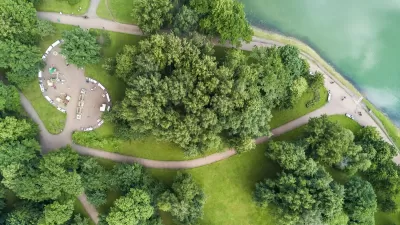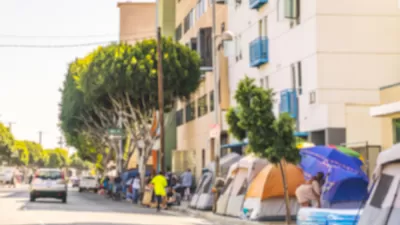A law passed unanimously by New York's City Council just four years ago requiring the Department of Parks and Recreation to document "how much money was flowing into different parks across the city" is being neglected, reveals Jacob Hodes.
While Los Angeles launches an initiative designed to help reduce the inequality of its parks, New York is moving in the opposite direction. At least that's the sense one gets from the failure of the city's parks department to comply with a law meant to address concerns that, "its parks system was splitting in two: in wealthy areas of the city,
gleaming, innovative green spaces, buttressed by private financing
sources; elsewhere, ailing parks with far fewer resources at their
disposal."
Local Law 28, which was passed unanimously by the City Council in 2008 and praised by the parks department, "required the Department of Parks and Recreation of New York City to
prepare an annual report that would detail, park by park, the
contributions of nonprofits and other private donors."
"Yet the most recent report from the parks department, on the 2010 fiscal
year, falls far short of the law's requirements," writes Hodes.
"'It doesn't reflect a real effort to comply with the law,' Alan J.
Gerson, a former councilman who sat on the parks committee in 2008,
said."
"'Whether it's for schools, or parks or any public place, the public
should know where the private money is coming from and what it's buying.
It's basic good government,' Mr. Gerson, a Manhattan Democrat, said."
"That's what we wanted to establish," he said.
FULL STORY: A Law to Expose City Parks’ Inequalities Is Neglected

Alabama: Trump Terminates Settlements for Black Communities Harmed By Raw Sewage
Trump deemed the landmark civil rights agreement “illegal DEI and environmental justice policy.”

Planetizen Federal Action Tracker
A weekly monitor of how Trump’s orders and actions are impacting planners and planning in America.

The 120 Year Old Tiny Home Villages That Sheltered San Francisco’s Earthquake Refugees
More than a century ago, San Francisco mobilized to house thousands of residents displaced by the 1906 earthquake. Could their strategy offer a model for the present?

In Both Crashes and Crime, Public Transportation is Far Safer than Driving
Contrary to popular assumptions, public transportation has far lower crash and crime rates than automobile travel. For safer communities, improve and encourage transit travel.

Report: Zoning Reforms Should Complement Nashville’s Ambitious Transit Plan
Without reform, restrictive zoning codes will limit the impact of the city’s planned transit expansion and could exclude some of the residents who depend on transit the most.

Judge Orders Release of Frozen IRA, IIJA Funding
The decision is a victory for environmental groups who charged that freezing funds for critical infrastructure and disaster response programs caused “real and irreparable harm” to communities.
Urban Design for Planners 1: Software Tools
This six-course series explores essential urban design concepts using open source software and equips planners with the tools they need to participate fully in the urban design process.
Planning for Universal Design
Learn the tools for implementing Universal Design in planning regulations.
Clanton & Associates, Inc.
Jessamine County Fiscal Court
Institute for Housing and Urban Development Studies (IHS)
City of Grandview
Harvard GSD Executive Education
Toledo-Lucas County Plan Commissions
Salt Lake City
NYU Wagner Graduate School of Public Service





























